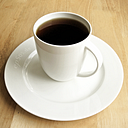Character Moods
This week at Story Club, my young writers’ workshop, we looked at moods. Which moods do our characters tend to be in? How do they look, speak and act differently in these moods?
Portraying characters in different moods can help bring our characters to life.
We thought about Elsa in Frozen, how she is fearful and inhibited at the beginning of the first movie. Her hair is bound in a braid, there are gloves on her hands, she frowns and her body posture is slouched. Compare this to the confident Elsa near the end, with her hair loose, gloves off and wearing a big smile.
I asked the young writers to come up with two moods for one of their characters and to describe how the character looks and acts differently in these moods.
One writer chose Anger and Shallow Happiness as the two moods. When her character is angry, her hair is all a-tangle and her eyes burn with a fierce gaze. When her character is happy, her golden hair is shining and well-combed. She smiles and shows dimples. Interestingly, this character is a bit shallow when she is happy and has more depth when angry.
Another example was Shy and Angry. The writer used the elements of fire and water to help convey these moods. In the shy mood, her character hid in the shadows, clutching something to her chest (usually a book). Her eyes went from dark water (shy) to frozen walls of ice (angry).
A humorous comparison of moods was Determined and Hungry. In the determined mood, this character had a backpack full of survival gear, wore cargo pants and boots and had her hair done up. Contrast with hungry where she either wore loose-fitting clothing (in order to eat more) or a fancy red dress (in order to slip into expensive restaurants and dine well).
Other moods came up such as scared, anxious and curious.
It’s worth exploring a few moods for each of our characters (human, animal or other) otherwise we run the risk of flat, 2-D characters. We can use these different moods to show character growth through the story.
